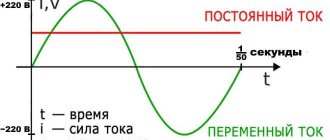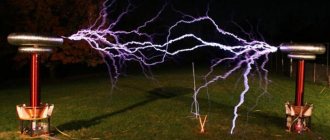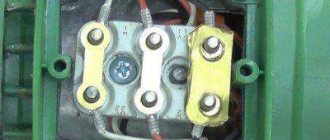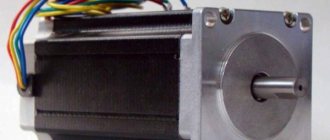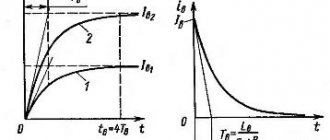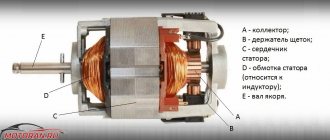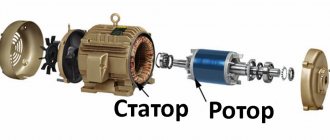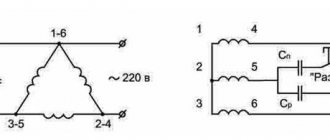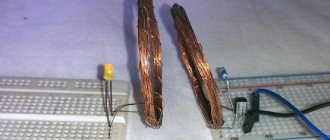How Tesla works
The Tesla Roadster electric car, launched into space by Elon Musk more than a year ago, at the time of writing this article is at a distance of 369 million km from Earth (this is truly a record run) and is approaching Mars at a speed of 81,220 km/h.
What “awaits under the hood” for representatives of foreign civilizations if they ever encounter it in the vast expanses of the universe? If the internal combustion engine is considered the “heart” of traditional cars, since it is the most technologically advanced and expensive design unit, then it is logical to consider its battery as the “heart” of this electric vehicle.
The lithium-ion battery is located in the bottom of the car, as a result of which the car has a very low center of gravity, and therefore excellent handling. The battery is installed on quick-release brackets and replacing it takes about one and a half minutes. Cost: $45,000.
Structurally, the battery consists of 16 parallel-connected blocks, which are reliably protected from external influences by a durable waterproof case. The battery weight is 540 kg, the output voltage is 400 V, the capacity is 85 kW/h, and the range is about 400 km. Each of the 16 blocks contains 74 storage elements that look very much like a regular battery.
These “batteries” are produced by “Panasonic” and everything related to the technology of their production is a “closed secret”. There are 7104 of them in total, each with a capacity of 3400 mAh.
Also, when assembling batteries, components from China, Mexico, India and other countries are used, the final assembly is carried out in the USA. Factory warranty - 8 years.
In the USA, there is a fairly extensive network of charging stations to charge Tesla; slow charging takes about half an hour and is free, and fast charging (replacing the battery with a charged one) takes 1.5 minutes and costs $80.
The voltage from the batteries is removed by an inverter (you have one in your washing machine and split system at home), and in the inverter, depending on the task assigned by the controller (read: gas pedal), the current is converted into alternating current and powers the electric motor.
The electric motor used in Tesla is not something advanced or unique.
A three-phase motor with a squirrel-cage rotor is used, the first copy of which was tested back in 1883 by Nikola Tesla.
Of course, there were some innovations: the cooling system was water through a hollow rotor. The engine itself is very technologically advanced - the rotor is made almost entirely of copper, which increases efficiency. The engine speed can reach 16,000 rpm. During braking, the engine is used as a generator and allows some of the energy to be returned to recharge the batteries. There is only one gear, the engine is mechanically connected to the wheels.
Cars are equipped with engines of different power, the most powerful produces 310 kW (416 hp) and locomotive 600 Nm of torque.
There are various options for complete sets of electric motors.
Versions in which the electric motor is also installed in the front axle are all-wheel drive. The most powerful Tesla has two engines with a total power of 772 hp. (259 hp on the front axle, 503 on the rear), acceleration to hundreds takes 3.4 seconds.
This layout of the power plant allows you to create a spacious interior; the car has two trunks - front and rear.
The interior is a triumph of luxury and digital technology; instead of a traditional dashboard, there is a display on which you can display any information about the car that interests you. The interior materials are of excellent quality.
In the USA and Western European countries, despite the high price, the car sells in huge quantities, which has a lot to do with it: the innovation of the car, its environmental friendliness, and the financial incentives provided by the authorities of many countries when purchasing electric vehicles. In our country, Tesla is a rarity that can only be found in large federal centers.
Source
Cons of Tesla electric vehicles
1.Long charging time
But this is where electric cars lose to their fuel-powered opponents. The latter can be refueled in almost five minutes, but a Tesla electric car with “high-speed” charging will charge for almost an hour. However, the company’s engineers are constantly working to reduce the time allotted for the charging procedure. Supercharger stations all over the world , allowing you to charge an electric car to 80% in half an hour, and completely free of charge. If you want to charge your car to capacity, you can count on about 1.5 hours.
2. High price
In principle, there is nothing surprising here - high technologies have always cost a lot. The most modest configuration, in the USA, will cost you a price tag of 43 thousand dollars, that’s 2.8 million rubles. We are talking about a new car, but in any case, even for an electric car, such a cost is not acceptable for many.
What does a Tesla electric motor look like?
Any connoisseur of the Tesla car brand knows that the company's name was not chosen by chance. Tesla Motors is named after the creator of the engine, Nikola Tesla, who lived in the 19th century. Almost every car that Tesla produces, from the Roadster to the Model S and X, is equipped with a 3-phase AC induction motor, the concept of which was invented by the legendary inventor.
For decades after its invention, Nikola Tesla's electric motor was powered by a fixed 3-phase AC electrical outlet. Around 1990, maverick engineer Alan Cocconi developed one of the early portable inverters , a device that converts the direct current (DC) in an electric vehicle battery into the alternating current (AC) needed to run an induction motor.
The inverter/motor combination was first used on the General Motors EV1 electric vehicle. Later, Italian physicist Giuseppe Cocconi created an improved version of this transmission, which appeared on the AC Propulsion Tzero. But this car did not reach mass production. But this electric machine attracted the attention of the future co-founder of Tesla Motors, Martin Eberhard, who founded the company in honor of the great physicist Nikola Tesla along with Mark Tarpenning, who was later joined by Elon Musk.
As a result, Tesla received a license for the tZERO electric motor technology for its Roadster. This is how an asynchronous motor appeared on Tesla cars, which, by the way, has undergone a number of changes and improvements.
The beauty of an induction motor is that it does not require permanent magnets. Permanent magnets powerful enough to rotate an electric car motor are usually made from rare earth materials. And, as you know, rare earth magnets have a huge initial cost. Also, such magnets tend to demagnetize. But the main thing is that prices for rare earth materials depend on their production, which leads to large exchange price fluctuations.
Tesla engine, operating principle
The most important component in a car is the asynchronous engine, which was developed by the great scientist Nikola Tesla. Let's look at the operating principle of an asynchronous motor
An induction motor consists of two parts: stator and rotor
How does an asynchronous motor work? An induction motor is a three-phase AC motor with a rotating magnetic field.
A rotating magnetic field is generated in the stator windings. This in turn drives the rotor.
We also must not forget the fact that in an asynchronous motor the rotation speed of the rotor itself will be less than the speed of the rotating magnetic field that is formed in the motor stator.
But that's not all. The rotational speed of such a motor depends on the frequency of the alternating current supplied to its windings. The higher the frequency, the faster the motor will rotate. Therefore, by controlling the frequency, we can control the rotation of the engine, and therefore the speed of the car itself. That is, all car control comes down to converting direct current into three-phase alternating current and the ability to change the frequencies of three-phase alternating current. This simple conversion of DC to AC at the desired frequency makes Tesla cars simple and reliable.
Alternating current
DC - direct current, AC - alternating current
Before you can learn how to use alternating current, you must first obtain it. In general, physicists have known about alternating current for a long time (since the discovery of electromagnetic induction) and Tesla did not discover it as such, but then everyone believed that alternating current was simply “garbage” that was unlikely to be used somehow. Tesla had a different opinion and immediately saw the full potential of alternating current.
Direct current flows continuously in one direction; AC current changes direction 50 or 60 times per second and can vary voltage to high levels while minimizing power loss over long distances. Later, the AC voltage can be lowered to be used in factories or homes. Tesla realized that the future belonged to alternating current.
Tesla described his motors and electrical systems in the paper "A New System of Alternating Current Motors and Transformers," which he presented at the American Institute of Electrical Engineers in 1888. It was then that George Westinghouse became interested in Tesla's developments, and one day he visited his laboratory and was amazed at what he saw. Nikola Tesla built a model of a polyphase system from step-down and step-up AC transformers, as well as an AC motor. Thus began the partnership between Wetsinghouse and Tesla. Nikola Tesla later received 40 patents for his inventions in the United States, and Westinghouse bought them all to provide himself with wealth and America with alternating current.
Below we will talk about these machines and how a multiphase power supply system was introduced in the USA.
Why is an asynchronous motor better than an internal combustion engine?
The graph of torque (N⋅m) versus internal combustion engine (ICE) speed looks something like this:
Therefore, connecting the ICE engine shaft directly to the wheels is not a good idea.
In this case, a transmission and gearbox are required
Also remember that the linear motion of the pistons must be converted into rotational motion. This is a very labor-intensive process, since you have to balance the entire engine so that there is less vibration during operation.
And in order to start such an engine, we also need a starter. And as you know, the starter will not start without a battery. Well, or “from the pusher”).
Another disadvantage of the internal combustion engine is that the power it produces is very uneven, so you need to use a flywheel.
To the obvious disadvantages of the internal combustion engine, you can also add its high cost, exhaust emissions into the environment, high cost of fuel, limited resource, since there are a lot of rubbing parts, low efficiency, loud noise, heavy weight, replacement of consumables, and also, as we have already They said a gearbox is required.
Battery platform
An asynchronous motor must be powered by something. Therefore, Tesla cars use a block platform of lithium-ion batteries. This battery pack produces constant current.
This unit consists of small simple li-ion batteries
The grille that partially holds the batteries is also a radiator through which antifreeze runs.
This type of heatsink is very efficient because it cools all the batteries evenly.
All these batteries are assembled into small modules
The platform consists of several such modules
In real life it looks something like this:
The antifreeze that cools the battery platform is cooled in the front of the car on the car radiator
You can also see that the heavy battery platform is close to the ground, so the low center of gravity improves the car's handling and stability.
The cost of such a battery platform is more than $12,000, and it weighs more than half a ton. So far, the battery platform is the most expensive part of the car. And in general, the problem with all electric cars is expensive batteries. If scientists develop cheap and very high-capacity batteries, then the era of internal combustion engines will come to an end.
Transmission
How is rotation transmitted from the engine to the wheels?
A gearbox is used for this
Tesla cars use a simple single-speed transmission because the engine torque is almost uniform at all speeds.
If you take the box apart, you can see its simple design
The rotation of the engine shaft leads to the rotation of the gear, which transmits torque to the wheels of the car.
Even reverse motion is achieved by the fact that the inverter swaps two phases on an asynchronous motor, and the motor will rotate in the other direction.
Regenerative braking
In a Tesla car there are only two pedals and a footrest for the left foot, so that there is somewhere to put it when driving)
In fact, you can drive a car with just one pedal: the gas pedal. In English, this method of driving electric cars is called one pedal driving.
. Why is this possible on electric cars?
Let's first figure out how braking generally occurs in a simple internal combustion engine car?
When we press the brake pedal, the brake pads press against the brake discs and the car begins to slow down. Where does all the kinetic energy of a moving car go? It turns into heat and dissipates into the surrounding space. You can touch the brake discs after prolonged braking. They will be very hot.
But in Tesla cars, braking occurs on a completely different principle. Yes, there are also brake pads and discs, but they are used much less frequently than in cars with internal combustion engines. How does braking work in a Tesla? As soon as you release the gas pedal, the car begins to stop, that is, the regenerative braking system is activated. In this case, the engine turns into a generator of electrical energy. Where does the energy from braking go? If in simple cars it went into heat, here the engine, acting as a generator, begins to recharge the batteries. That is, we can say that all the kinetic energy of the car is converted into electricity and stored in batteries. But why does the braking process occur? The fact is that the magnetic field formed in the stator windings will slow down the rotor, which is why the motor shaft is braked.
To bring the electric car to a complete stop, you will need a brake pedal, which is pressed at the very end of the stop. It follows that brake pads on a Tesla need to be changed many times less often than on a car with an internal combustion engine.
How does an electric motor work?
The principle of operation of the Tesla electric motor is this. It starts with a battery in the car, which is connected to the engine. Electrical energy is supplied to the stator through the battery. The coils inside the stator (made from conductive wire) are located on opposite sides of the stator core and act like magnets. So when electrical energy from a car battery is applied to the engine, the coils create rotating magnetic fields that pull conductive rods on the outside of the rotor along it. The spinning rotor is what creates the mechanical energy needed to turn the car's gears, which in turn turn the tires.
An electric car does not have an alternator. How is the battery charged? When there is no separate alternator, the engine in an electric vehicle acts as both a motor and a generator. This is one of the reasons why electric cars are so unique. As mentioned above, the battery runs the engine, which supplies power to the gears that turn the tires. This process occurs when the foot is on the accelerator - the rotor is pulled along the rotating magnetic field, requiring more torque. But what happens when the accelerator is released?
When the foot leaves the accelerator, the rotating magnetic field stops and the rotor begins to spin faster (as opposed to being pulled along the magnetic field). When the rotor spins faster than the rotating magnetic field in the stator, this action recharges the battery, acting as an alternator.
Autopilot Tesla
In my opinion, this is the coolest thing that Elon Musk’s team has brought to life. Autopilot uses a feedback system of 8 cameras that cover a full 360 degree viewing angle at a range of 250 meters, 12 sensors that help in dangerous situations and also help park, and there is also a Summon function that helps move the car, for example, from garage, or remove from the parking lot using a mobile application.
Tesla Autopilot can drive the car completely autonomously. It can also warn the owner about dangerous situations on the road.
Tesla Autopilot
But this technology takes the models of the famous elite manufacturer of electric cars to a completely different level. The autopilot uses a feedback system consisting of eight cameras covering a viewing angle of 360 degrees at a distance of 250 m. There are twelve sensors that can serve well in dangerous situations, and also help in the parking process. There is also a Summon function that helps move an electric car, for example, from a garage, or it can also be taken out of a parking space using a mobile application. The autopilot system can control the car in fully autonomous mode, and its responsibilities include warning the driver about unsafe circumstances on the road.
Disadvantages of Tesla electric vehicles
Long charging time
.
While a simple car with an internal combustion engine can be refueled in literally 5 minutes, Tesla needs about an hour. But here again there is progress. The company is currently striving to make charging times as short as possible. To do this, it builds so-called Supercharger stations around the world. These gas stations, as Tesla says, will be completely free
, and your car will be able to charge
80% in 30 minutes
! That is, while you are drinking coffee, your car will be ready to conquer the open spaces again) A full charge at such gas stations lasts about an hour and a half. So far there are not many such gas stations, but I believe that the situation will still change for the better.
High price
. Prices for new Tesla models in homeless configuration in America start at $43,000. According to our money, this is about 2,800,000 rubles. In Moscow, prices start at 3.5 million rubles. Not very cheap for an electric car.
Advantages of Tesla electric vehicles
1. Refueling with electricity is more profitable than refueling with fuel
Moreover, the benefit is very significant, and to fully understand this circumstance, we will carry out some simple calculations.
Let's take as an example the most powerful batteries that can be found on Tesla electric vehicles - 100 kWh. Such a device will provide a power reserve of approximately 500 kilometers. In Moscow, the cost of 1 kWh is about 6 rubles. To refuel our 100-kilowatt Tesla you will need only 600 rubles: 100×6=600. We divide the amount of 600 rubles. for a mileage of 500 km and we get a cost of 1.2 rubles. for 1 km run.
What about gasoline? Here we will take as an example a mass-produced car - the Lada Granta, which consumes 7 liters of fuel per 100 km. With the approximate cost of gasoline in Moscow being 43 rubles per liter, for a hundred kilometers of road you will have to spend about three hundred rubles: 300/100 = 3 rubles. for 1 km. In general, almost the same ratio can be observed throughout the globe.
All these calculations indicate that refueling a vehicle with electric energy will cost almost three times less than using gasoline.
2. Ecological cleanliness
Electric cars are superior to cars equipped with internal combustion engines not only technically, they also do not pollute the environment. For humans, the atmosphere infused with harmful emissions does not pass without a trace: a variety of diseases make themselves felt, which most threaten citizens living in megacities. Electric cars don't cause any harm in this regard - they simply don't emit any emissions. In some countries, in the fight for a cleaner environment, the government exempts owners of electric cars from paying vehicle tax.
